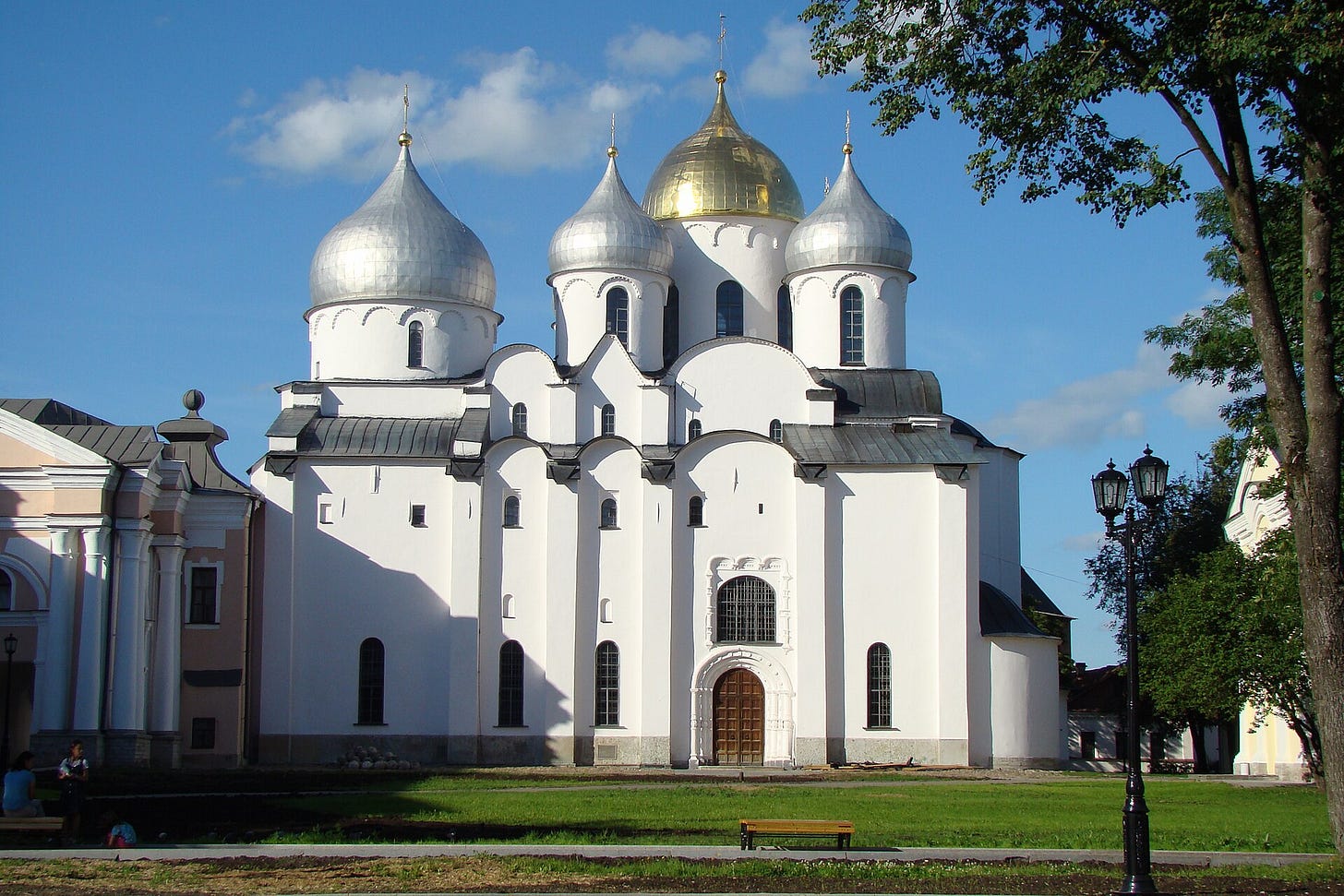Today, on 4/17 October, the Church commemorates Saint Vladimir, Prince of Novgorod - Valdamarr Jarizleifsson, son of Grand Prince Yaroslav (Jarizleif) the Wise, grandson of Grand Prince Vladimir (Valdamarr) the Great, the first Christian ruler of the Rus, and King Olof (Olafr), the first Christian ruler of the Swedes.
Saint Vladimir of Novgorod
Saint Vladimir lived in the 11th century. He was only 14 years old when his father, Grand Prince Yaroslav the Wise of Kiev, sent him as the ruler to Novgorod. Vladimir performed this task with the help of his trusted advisors - Vyshata and Bishop Luke the Jew.
Vyshata was the great-grandson of the legendary Dobrynya - the commander of the army of Sviatoslav (Sveinald) I of Kiev and the tutor of Vladimir the Great.
Bishop Luke was the second bishop of Novgorod and the first born in the lands of the Rus. All previous bishops were Greeks. His sobriquet “the Jew” may indicate that he was of Jewish descent.
In 1043, at the age of 23, Prince Vladimir led the Rus navy in an unsuccessful campaign against Constantinople. Vyshata led a Ruthenian force by land. Emperor Constantine IX Monomachos sent a Ruthenian fleet to sink the Rus ships and the Varangian Guard to repel Vyshata’s Ruthenians. Curiously, Vladimir was saved from his sinking ship by the Ruthenian commander responsible for sinking it. Vyshata was taken prisoner and remained in captivity in Constantinople for three years, at which time a peace treaty was signed. As was customary in those days, the treaty was sealed with a marriage: Byzantine Emperor’s daughter was sent to Kiev to marry the Grand Prince’s son.
Upon returning from the military campaign, in 1045, Prince Vladimir laid the foundations of Saint Sophia cathedral in Novgorod - one of the oldest churches in Russia that is still used for divine services. There is some reason to believe that Vladimir’s mother had much to do with building of the cathedral.
Saint Sophia Cathedral in Novgorod
Vladimir’s mother was the Swedish princess Ingegerd Olofsdotter - that is to say, the daughter of King Olof. She was known for her piety and like her husband and son, she was recognized as a saint by the Russian Church. Some scholars argue that it was under her influence that the cathedrals of Saint Sophia were built in Kiev in 1037 and Novgorod in 1045. Ingegerd and Yaroslav had several children, one of whom became the queen of Norway, another - the queen of Hungary, and another - the queen of the Franks. At the end of her life, Ingegerd became a nun with a monastic name Anna. Some say that she is buried at Saint Sophia in Kiev; others say that her remains are at Saint Sophia in Novgorod.
Saint Sophia Cathedral in Kiev
The cathedral in Novgorod was completed in 1050 and consecrated by Bishop Luke that same year. Two years later, in 1052, at the age of 32, Prince Vladimir reposed in the Lord. He is buried in Saint Sophia, on the right-hand side, between the aisles of Saints Joachim and Anna and the Nativity of the Theotokos, next to what many believe to be the sarcophagus of his mother, nun Anna of Novgorod.
Saint Anna of Novgorod

















Share this post